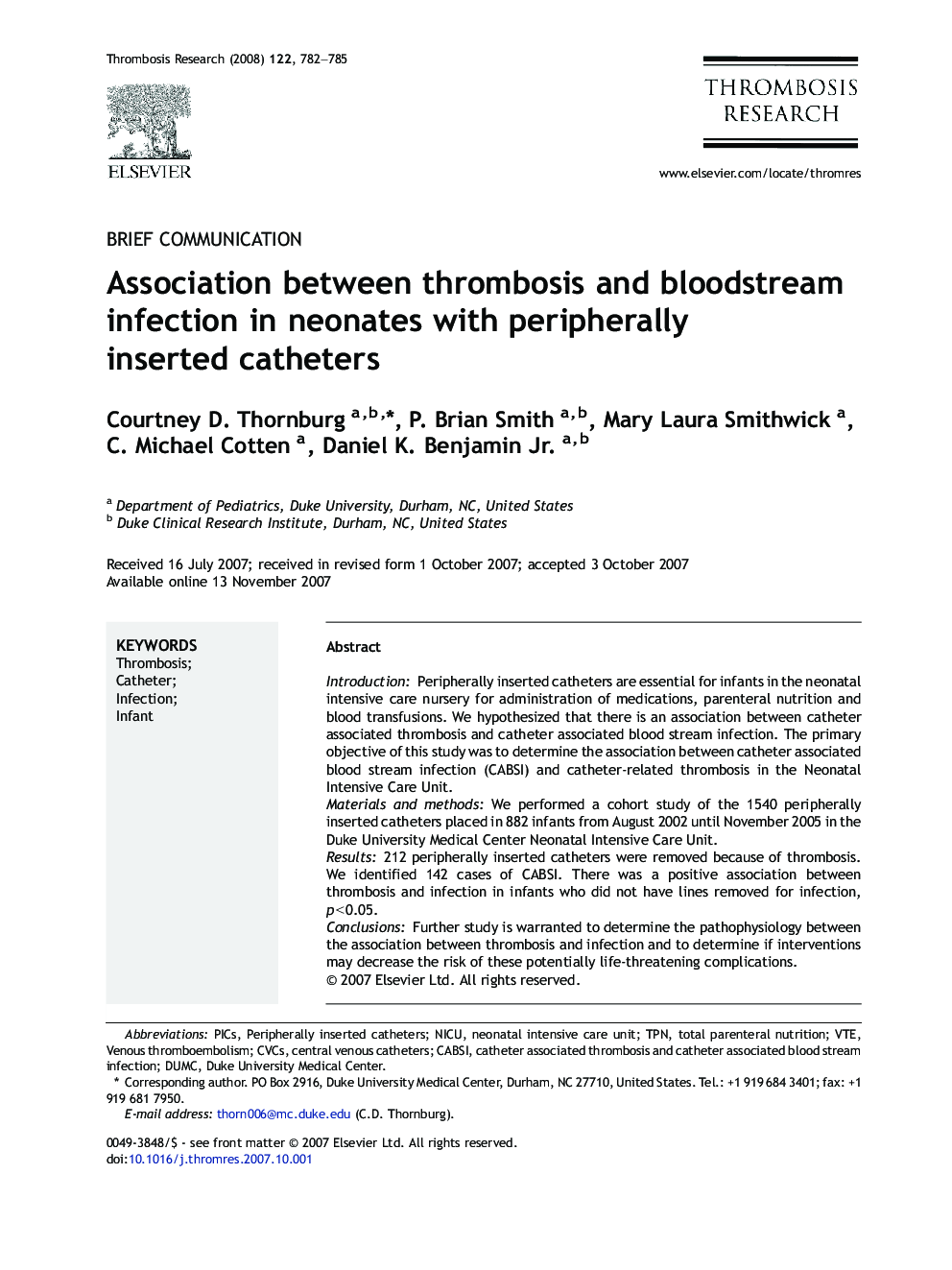| Article ID | Journal | Published Year | Pages | File Type |
|---|---|---|---|---|
| 3029395 | Thrombosis Research | 2008 | 4 Pages |
IntroductionPeripherally inserted catheters are essential for infants in the neonatal intensive care nursery for administration of medications, parenteral nutrition and blood transfusions. We hypothesized that there is an association between catheter associated thrombosis and catheter associated blood stream infection. The primary objective of this study was to determine the association between catheter associated blood stream infection (CABSI) and catheter-related thrombosis in the Neonatal Intensive Care Unit.Materials and methodsWe performed a cohort study of the 1540 peripherally inserted catheters placed in 882 infants from August 2002 until November 2005 in the Duke University Medical Center Neonatal Intensive Care Unit.Results212 peripherally inserted catheters were removed because of thrombosis. We identified 142 cases of CABSI. There was a positive association between thrombosis and infection in infants who did not have lines removed for infection, p < 0.05.ConclusionsFurther study is warranted to determine the pathophysiology between the association between thrombosis and infection and to determine if interventions may decrease the risk of these potentially life-threatening complications.
